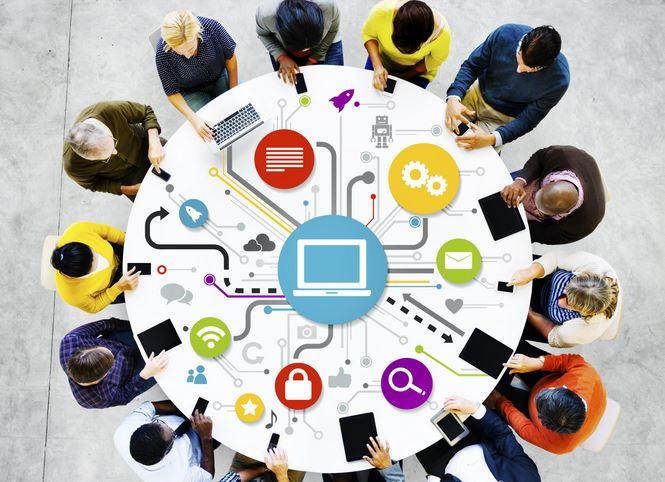The Digital Workplace – Where Exactly Is It?
The digital workplace is more than a place – it’s a strategy – and a method of being able to work almost anywhere while using a variety of technology devices. The purpose is to be able to increase employee engagement, improve team collaboration and create an environment where communication is easy, productive and streamlined.
The trouble is, many collaboration tools available today AREN’T intuitive or easy to set up, or lack interoperability with other platforms which can be discouraging and frustrating to users. The result is that it’s driving them back to old methods that hinder creativity, slows down work team success and creates a bottleneck in workflows. A digital workplace should strive to help both individuals and teams work more flexibly and productively in an environment that’s motivating – not intimidating. When technology takes longer to set up and manage, then it starts to become more of a burden than an advantage.
The digital workplace includes:
- Desktop Devices
- Mobile Devices (smartphones, tablets)
- Web-based Applications
- Conference Rooms and Huddle Spaces
The applications being used should have a familiar look and feel, similar to social media and other apps that we use every day. This will encourage employees to maximize use of the digital workplace for both formal and informal meetings, sharing content, viewing documents in real-time and allowing participants to share and connect wherever they are. On premise or cloud-based communications should enable individuals and teams to interact any time they like. When it comes to communication, everyone has their preference as to how they want to work. The digital workplace offers workers the flexibility they require to motivate them and encourage participation.
Of course, there’s always a push-pull when technology is involved. Workers want greater flexibility and mobility in the workplace (even possibly using their own personal devices), while IT is interested in security, standardization of processes and compliance. The digital workplace is designed to be as safe and secure as the company network, with processes in place to protect users and the organization as a whole. Access, permissions, and internal standards keep it a safe place to work.
Cisco Webex Teams
Webex Teams (formerly Cisco Spark)- is a great example of a collaboration tool that lets workers communicate effectively in the digital workplace. Webex Teams offers users the ability to:
- Communicate via group chats, group messaging, video calls
- Arrange group chats within teams or spaces
- Route calls through a Cisco phone system; devices can even be switched during a call
- Brainstorm using a built-in whiteboard app
- Choose the OS (Android, iOS, Windows)
You can learn more about Webex Teams in our previous blog.
Here are 4 tips for success in your new workplace:
- Give employees the flexibility to choose how they want to work in the digital workplace (from the office computer, or their personal smartphone, maybe even a tablet when they’re on the go.)
- Provide the right tools to express and create, store and share documents, communicate by text or messaging, all in real time. Proactively provide training and support to staff.
- Encourage video collaboration on the fly, keeping projects moving and scheduling to a minimum.
- Secure your digital workplace. Partner with an expert who can take you through the process, step-by-step, to automate security across physical, virtual and cloud.
At Yorktel, we understand the complexities of the digital workplace, and offer the tools and expertise to ensure smooth deployment and integration. From installation and training, to user adoption and technical roadmapping, we are your partner from end to end, and into the future. For more information on what you need to build the digital workplace of your dreams, contact us today.
